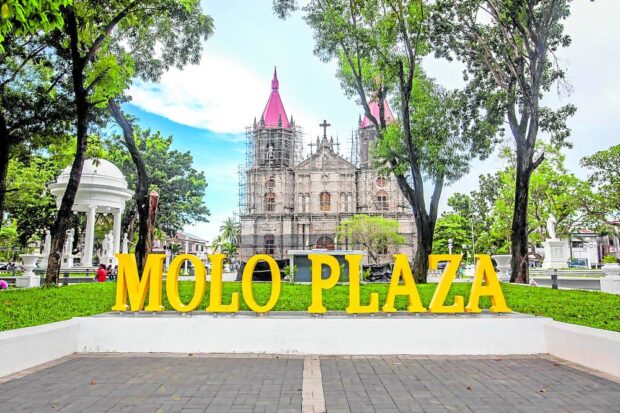Molo Plaza, one of the six district plazas in the city, has undergone a yearlong rehabilitation to provide a relaxing space for residents and visitors. Children play while young men exercise on the monkey bars. Couples sit in the gazebo and friends stroll nearby. The plaza, built in the 1920s, is located in front of the historic St. Anne parish church, visited by Dr. Jose Rizal in 1886. In 1992, the church was declared a national historical landmark.
The restoration of Molo Plaza was made possible by the P20 million funds from the National Historical Commission of the Philippines. MORE Power and Electric Corp. sponsored the restoration of the plaza and church lighting. The statues of Greek goddesses and Maria Clara have been restored, and the concrete pathways have been replaced with bricks. The well-lit fountain and classical music played through a sound system enhance the ambiance of the plaza, earning it the nickname “Athens of the Philippines.”
The city government has also been rehabilitating the other district plazas, aiming to create open spaces for relaxation. Fences and barricades have been removed, allowing the plazas to be open to the public 24/7. Plaza Libertad, in front of the Iloilo City Hall, is currently being restored. It holds historical significance as it is where the Spaniards surrendered to Filipino revolutionaries in 1898. The plaza has been expanded and now includes an Assembly Area for flag-raising ceremonies. The lighting, fountain, and statues have been restored, and bike parking ramps have been installed.
The restored Jaro Belfry, once damaged by an earthquake, has been turned over to the Archdiocese of Jaro. The Jaro Plaza, named Graciano Lopez Jaena Park, now features a monument to Ilonggo veterans, a bandstand, a statue of Lopez Jaena, and a shrine honoring Patrocinio Gamboa.
All three plazas have been conceptualized by renowned landscape architect Paulo Alcazaren. Additionally, the smaller Mandurriao Plaza has been reopened, with expanded pathways, more greenery, benches, and lamps. The rehabilitation was funded under the “Green, Green, Green” program of the Department of Budget and Management. The City Environment and Natural Resources Office (Cenro) has installed additional “green guards” to maintain and secure the plazas.
The rehabilitation work involved both “hard” and “soft” phases. The “hard” phase focused on improving pavements and drainage systems, while the “soft” phase included the planting of trees and flowering plants. The city’s vision is to transform the plazas into urban landscapes that stimulate the senses and complement surrounding structures.
The national government has provided financial support for the plaza redevelopment due to their location in designated Cultural Heritage Tourism Zones. The city government is also redeveloping La Paz Plaza and Arevalo Plaza. Arevalo Plaza has already reopened with refreshed greenery, new lighting, and replaced brick tiling. The redevelopment of La Paz Plaza includes the construction of an amphitheater, a promenade, and a retention pond for rainwater catchment. The plaza now features a koi pond, butterfly garden, and man-made waterfall, donated by Global Business Power.
The city government aims to create vibrant plazas that serve as oases in the urban landscape. They are considering building additional public toilets, ensuring that the design complements the overall ambiance of the plazas. With ongoing rehabilitation efforts, these plazas will continue to provide a space for relaxation and enjoyment for residents and visitors.
Denial of responsibility! VigourTimes is an automatic aggregator of Global media. In each content, the hyperlink to the primary source is specified. All trademarks belong to their rightful owners, and all materials to their authors. For any complaint, please reach us at – [email protected]. We will take necessary action within 24 hours.


